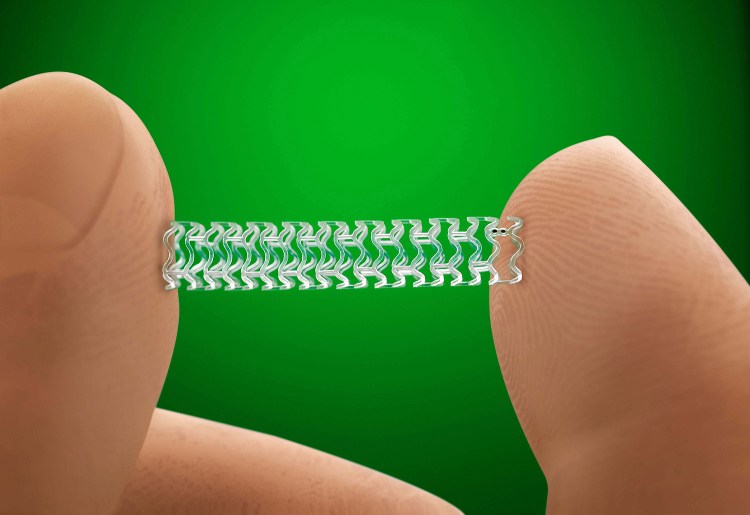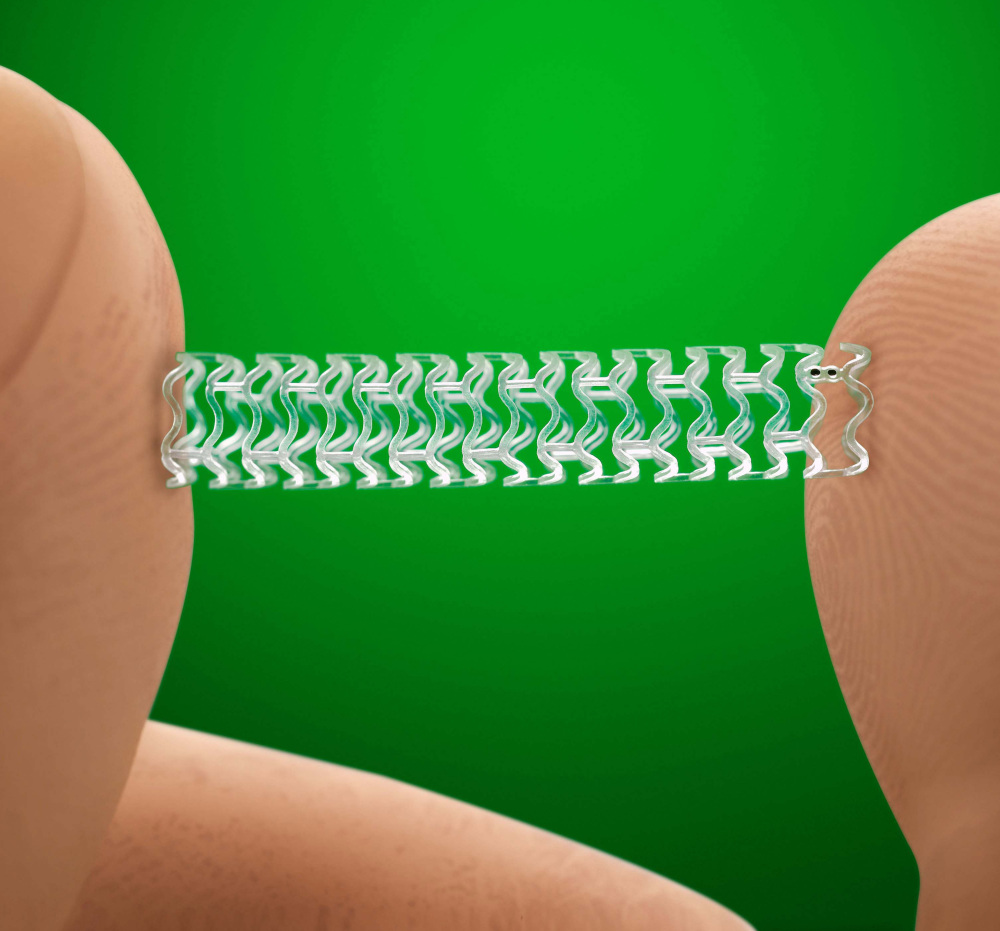Now you see it, now you don’t. A new type of heart stent that works like dissolving stitches, slowly going away after it has done its job, passed its first major test in a large study, doctors said Monday.
Abbott Vascular’s dissolving Absorb stent performed as well as a conventional stent in the one-year study, but the fact it did not prove superior led some experts to be wary.
Still, the results on this and other novel stents currently in testing are fueling hope for a new generation of these devices, used on about 850,000 heart disease patients each year in the United States alone.
Stents are tiny mesh cages that keep blood vessels from reclogging after an artery-opening angioplasty procedure. The ones available now in the U.S. are permanent implants made of metal, usually coated with a material that oozes medicine, but they sometimes cause inflammation down the road.
The Absorb stent, already sold in Europe, is made of a degradable material that’s designed to stay intact and release medicine for a year, then break down over the next two years.
“It holds the artery open long enough for the artery to heal,” then completely goes away, said one study leader, Dr. Dean Kereiakes of Christ Heart and Vascular Center in Cincinnati. “It can return the artery to its normal, natural structure and function.”
The study involved about 2,000 patients with chest pain due to one or two clogged arteries, and was aimed at winning Food and Drug Administration approval to sell Absorb in the U.S.
In the study, those treated with the dissolving stent fared as well as those given a conventional Abbott stent called Xience. After one year, 6 percent to 7 percent of both groups had died of a heart-related cause, had a heart attack due to a problem with the treated artery or needed a new artery-opening procedure.
The dissolving stent did not prove better, though, on several measures.
Copy the Story LinkSend questions/comments to the editors.




Success. Please wait for the page to reload. If the page does not reload within 5 seconds, please refresh the page.
Enter your email and password to access comments.
Hi, to comment on stories you must . This profile is in addition to your subscription and website login.
Already have a commenting profile? .
Invalid username/password.
Please check your email to confirm and complete your registration.
Only subscribers are eligible to post comments. Please subscribe or login first for digital access. Here’s why.
Use the form below to reset your password. When you've submitted your account email, we will send an email with a reset code.